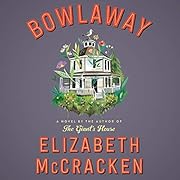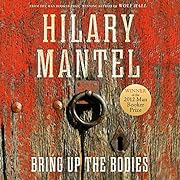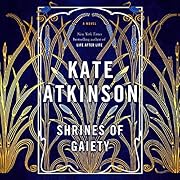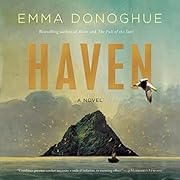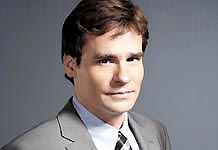I wasn't very diligent on my blog this year, but that's okay. I do what I feel like, when I feel like it. I did like keeping track of the historical fiction books I read this year, and I plan to join Marg's Historical Fiction challenge again next year.
There is a type of book that is kind of historical but more parallel or looking back. Do you consider these Historical Fictioin? The last few I read that were good were Carrie Soto is Back by Taylor Jenkins Reid about a tennis player who comes out of retirement, so the book follows her present day attempts to get back into competition alternating with the story of how she was champion fifteen years before. Now is Not the Time to Panic by Kevin Wilson was another of these parallel stories where the present day story is integral to the past story, and the narrative flips back and forth. This one kept my attention a lot and I couldn't stop listening to it as secret prank from two misfit teenagers comes back to life after twenty years.
October
20th century Massachusetts
One of those sprawling, generational family stories, set in a bowling alley. Covers the history of bowling as well as the family which owns it. There is some magical realism stuff and mysteries. I know I liked it at the time, but I can't really remember too much.
16th century England
More in the Thomas Cromwell story, the second in Mantel's trilogy. Here Anne Boleyn is the queen, but not for long as Henry is already looking around. It's the story of Cromwell and the machinations at court. Makes stuff today look pretty tame actually. Mantel writes a good story, but if you've read any Tudor stuff, you know the story. I read this one soon after Hilary Mantel died, and I'll go for the third eventually. One of the rare trilogies where the books get shorter.
November
WW2 England
My library finally got this book #9 well after I read book #10, The Hollywood Spy. This was probably one of Maggie Hope's better books, as Miss Pollyanna has finally been worn out by the evil of the war, and the deception of the spying. Maggie is still viewing her world with a modern sensibility towards homosexuality, PTSD. She's working as a bomb diffuser since she just doesn't care anymore, lol. Maybe I liked it more because the war was more of a background in this book, as Maggie is drawn into helping find a serial killer in London, as if the blitz wasn't enough to deal with.
December
1920s England
Atkinson went through a spell with some, I'd call, experimental books. There were a few, Life After Life, and A God in Ruins, that I tried as audiobook, but just couldn't follow. Then I read the paper book and loved. Transcription was a more straightforward novel, but still relied on the research she had done for WW2. Shrines of Gaiety reminded me more of her Jackson Brodie books, with a large cast of characters gradually being pulled in the center by the plot. Set in roaring twenties of London, life is fun and returning to 'normal' after the war, Nellie Croker, fresh out of prison, is controlling her large family of adult children as well as a series of nightclubs. There are missing girls, spunky girls who can't live a quiet life after the war, and police, both on the take and not. Really, there was a lot of fun in this book, just what I look for in a good historical fiction book.
7th century Ireland
Oh, Emma Donoghue, what can't you write about? Her most famous book, Room, is present day, but all her other books are fantastic historical fiction and while I don't love all her books, she always writes great characters that draw you in, as well as setting the time and place so well. It's a small book here, as three monks take off, with one definite leader and two who will obey, to an isolated island off the coast of Ireland. (you will want to look up Skellig Michael, a real place that this story is based on. Add it to your bucket list). This type of devotion is frustrating to read with the fervent faith of the leader versus the practical thought of his underlings. Could have been very annoying, but Donoghue keeps her characters real and the reader very early hopes for the best for the likeable guys and that they can actually survive on more than God's love.
1960s Northern Ireland
It's good to read a seasonal book and this novella in the Irish Country series fit the bill. While the most recent release, Taylor goes back a few years for the Christmas story. The medical issue throughout is chicken pox, the relationship issue is a prodigal brother returns, and all the characters of Ballybucklebo are present. Just delightful and a great series if you like a gentle book with fun stories. We are at the middle to late sixties, and there is very little of 'the troubles' mentioned.

